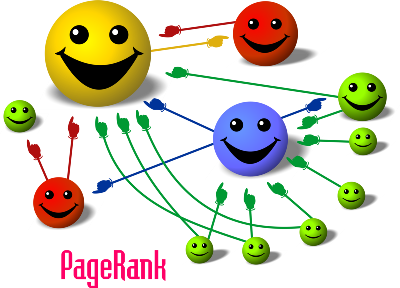Some people think that a link with a no-follow code will get ignored by search engines. This idea is widely circulated within the SEO communities, and thus many a webmaster still takes this notion to heart. The fact of the matter is that no-follow links are not ignored by search engines, and can be indexed. Therefore these links can affect search engine page ranking. It all started in 2008, when Google first indexed links with the no-follow code into its database.

PageRank
Most webmasters look at PageRank as a sort of metric of a particular website’s reputation, and is a popular term with many forums. In Google’s website index, every page has a PageRank. As a metric, it shows a webpage’s importance in relation to other sites. The algorithm used to do this is used exclusively by Google, but even so webmasters have observed how it works long enough to construct models on how PageRank is calculated.
A simplified model of this unique algorithmic process is described as follows. Imagine there are three pages, A, B and C with 30 reputation points each to distribute. Now Page A links to Pages B and C, and the 30 reputation points of Page A are then doled out evenly to both B and C, resulting in the two having 45 reputation points each.
To exclude the possibility of an infinite loop happening, a decay factor of about 10 to 15% is built into the algorithm, which is included in the calculations prior to distribution of the points. Using this element into the model above, with 10% decay Page A is passing 13.5 points each to Page B and Page C instead of 15.
The process of PageRank is, therefore, pretty much automatic. Then in 2005 a concept was introduced that enabled webmasters to control how reputation points are distributed. This is the concept of using no-follow links. Going back to the same example, if Page A has a do-follow link with Page B and a no-follow link with Page C, all points from Page A will pass to Page B. Page C will receive zero. The do-follow and no-follow coding in the links made all the difference.
Misuse of No-follow Links
The aim of the no-follow coding was primarily to provide webmasters a countermeasure against spammers. In the model, this meant that a no-follow link allowed Page A to instruct search engines that it does not want to give any reputation points to Page C, which in this example represents a spam website.
This concept was soon followed by the idea of making the no-follow attribute work in favor of websites by way of controlling PageRank itself. Unscrupulous web designers who want to achieve high rank positions for select pages would use the no-follow coding in those pages’ links with other websites, thereby receiving reputation points and giving away none. This has the negative effect of depriving Google users the access to potentially good quality content, since a low PageRank would mean a low probability of being returned as a query result in Google searches.
To combat this abuse of the no-follow link, Google implemented the process of adding web links that have the no-follow code into its index. This modification was made public through a blog post by Google expert Matt Cutts in June 2009. Other than this, no mention of this change was ever made. Presumably, webmasters would notice the difference anyway and align their websites to the change.
The Effect of Google Indexing No-follow Links
Evidently, Google’s new way of treating no-follow links will show itself in PageRank calculation. Going back to the model, where Page A links with Page B using the do-follow coding and Page with the no-follow coding, the modification changes how the points are distributed. Instead of receiving 27 points Page B will get 13.5 and Page C still gets zero. The other 13.5 are counted as a loss for Page C.
Websites that formerly benefit by exploiting the no-follow coding are now faced with modifying their links anew, since that system no longer works. At most all the links with the code will need to have the no-follow attribute removed, as keeping them is pointless and even wasteful as far as PageRank is concerned.
This is the logic behind Google’s decision to amend the previous system. Still, a lot of webmasters and SEO professionals are at odds concerning the value of indexed no-follow links with regard to search engine optimization. Some think their only worth lies in their newfound ability to get indexed and draw search engine traffic like normal links, while other experts still believe that even with the new algorithmic treatment they continue to lend emphasis to the linked sites around them.
All things considered, there is no denying that Google tracks no-follow links and considers them as legitimate backlinks. Proof of this can be found by using Google Webmaster to verify all the backlinks for any particular website. One can also find exchanges about this quirk’s existence in forums.
Perhaps the best way to achieve higher PageRank is to ignore the no-follow link concept entirely and focus instead on numerous other ways to improve a website’s rank in the search engines.
Related read- Nofollow : Friend In Disguise For Your SEO Campaign
RELATED POSTS
View all
